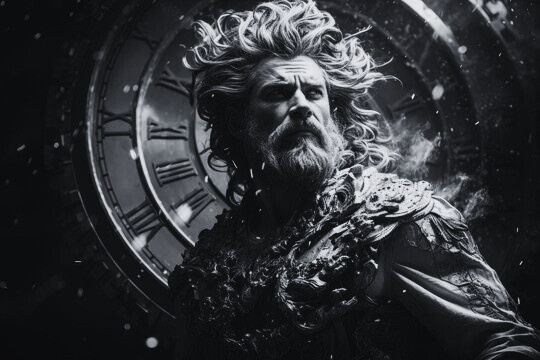Jupiter - Saturn Archetype: Jungian View
Jupiter – Saturn Archetype: Jungian View
In Jungian analysis, archetypes are viewed as the underlying structures of the collective unconscious—patterns that recur throughout mythology, religion, dreams, and human behavior. The Jupiter-Saturn archetype is not a classic Jungian “single” archetype like the Shadow, Animus, or Great Mother, but represents a dynamic axis between two opposite but interdependent psychic functions: expansion and limitation.
Jupiter: The Principle of Expansion
Jupiter symbolizes the pursuit of growth, meaning, integration and confidence in life. In the mythological and astrological framework, Jupiter (Zeus) is the figure of the ruler who expands order, expands horizons and opens possibilities. On the psychological level, this translates into:
• The need to understand and unify experiences into a coherent sense.
• A tendency towards optimism and faith in one’s own purpose.
• An archetypal impulse toward learning, philosophy, and a vision of the bigger picture.
• Tendency to overcome the limits of personal ego and connect with something bigger.
In an unconscious form, the Jupiterian impulse can degenerate into grandiosity, ego inflation, underestimation of limitations and rejection of reality if not balanced.
Saturn: The Limiting Principle
Saturn is the opposite sex – the figure of structure, discipline, boundaries and dealing with the necessities of existence. In mythology, (Kronos) is the one who sets order, controls the flow of time and shapes material reality. In psychological terms:
• Represents the capacity for self-discipline, realism and taking responsibility.
• Limits the impulse of infinite expansion and seeks confrontation with its own limits.
• Brings awareness of transience, mortality and laws that cannot be circumvented.
• Provides form without which content remains chaotic.
In a pathological form, Saturnian energy turns into rigidity, fear of change, depression and inhibition of the creative impulse. Archetypal Dynamics: The Tension of Opposites In Jungian terminology, Jupiter and Saturn act as a pair of opposing principles that require a process of individuation to bring them into balance. Individuation here means integrating both impulses – recognizing when expansion is necessary (Jupiter) and when restriction is necessary (Saturn).
Without Saturn, Jupiter turns into unlimited ego inflation and phantasmagorical projects without foundation. Without Jupiter, Saturn becomes inhibition, paralysis of will and life without meaning. Psychic wholeness is achieved when a person learns to use the Saturnian structure to support the Jupiterian vision, and vice versa.
Collective projection
In collective psychology, this dynamic is often projected onto political and cultural figures. A leader with Jupiterian characteristics brings promises, visions and expanding boundaries – the audience sees him as a bearer of meaning. However, without a Saturnian corrective, unrealistic expectations and collapse ensue. Conversely, a Saturnian leader brings order and structure, but if the Jupiterian dimension is absent, society stagnates.
Clinical Perspective
In analytic work, the client may project Jupiter onto the therapist – expect endless support, understanding and confirmation of meaning. Saturn occurs when the therapist sets boundaries, brings the focus back to real possibilities, and confronts the client with what he is avoiding. That “dance” between the support and the border is often the key to progress.
An imbalance in the internal Jupiter-Saturn relationship manifests itself through life patterns:
• Too much Jupiter: mania, taking too many risks, denying limitations.
• Too much Saturn: chronic inhibition, guilt, life’s minimalism without joy.
Conclusion
The Jupiter-Saturn archetype shows that psychic maturity does not come from total surrender to one principle, but from consciously maintaining the tension between them. Jung would say that individuation happens precisely in that “living space” between opposites – where expansion has a frame and limitation has meaning.

